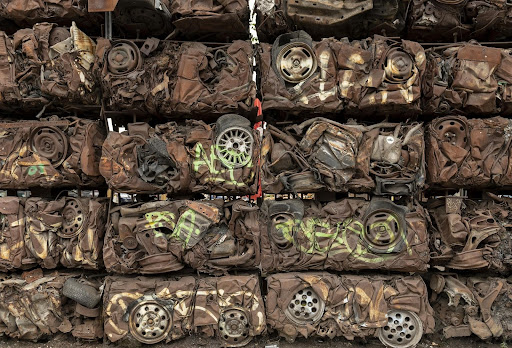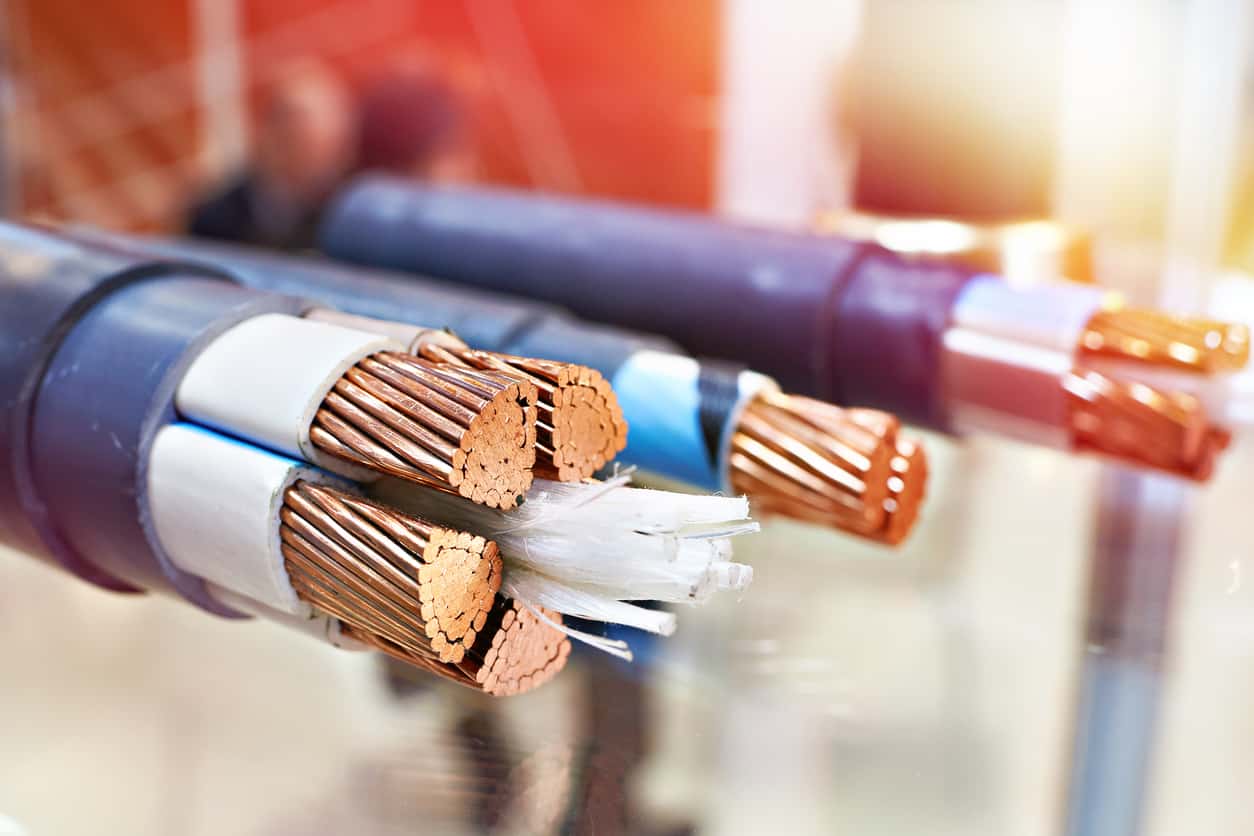There are recyclable items everywhere around you, and recycling them can bring money into your pockets while making the environment cleaner. Each year, tons of scrap are recycled — in 2020, about 4.5 million metric tons of steel alone. Steel is a ferrous metal, and just like its more valuable non-ferrous counterparts, it’s highly reusable and can be sold to scrap yards.
How is ferrous metal different from non-ferrous metal? It contains iron, so it attracts magnets and will rust when exposed to oxygen. Examples are carbon steel, cast iron, sheet iron, light iron, stainless steel, and alloy steel. These scrap products can become useful again after remelting, recasting, and redrawing at a steel mill.
If you know how to identify ferrous metals, you can find out what common items around you can fetch a price from scrap yards. Scrap yards price ferrous on a per-ton basis, while non-ferrous is priced per pound. Knowing the difference between these metals will help you understand your scale ticket when you scrap. Here’s how you can tell if you have a ferrous metal and some examples of common items.
How to Identify Ferrous Metal
When you’re dealing with metal and need to recycle it, it’s good to know how to separate ferrous metal from the non-ferrous type. Ferrous metals share the basic properties of being magnetic and prone to rust. Other common properties of ferrous metal include durability, great electrical conductivity, good tensile strength, and low corrosion resistance.
Ferrous metals can contain an array of alloying elements like nickel, chromium, manganese, vanadium, and molybdenum. It is these alloying elements that provide the ferrous metal with the capacity to withstand various engineering applications and construction into containers, cutlery, pipelines, and even structures like skyscrapers.
Metals containing iron are generally heavier than others. They are also less malleable. But they are highly resistant to corrosion other than rust and are durable enough to be used in railroads, automotive parts, farming equipment, drill bits, motors, power tools, electrical appliances, and more.
Without a high-tech scanning device, it’s impossible to know the exact composition of your metals, but you can easily tell if they are ferrous or non-ferrous. All you need to do is perform a simple manual test with a magnet. Since ferrous metals have magnetic qualities if you hold up a magnet near them, the magnet sticks. When the magnet doesn’t attract, it shows that the metal doesn’t contain iron and is thus non-ferrous.
How to Scrap Ferrous Metal
Scrap yards often have different drop-off areas for ferrous metals and non-ferrous metals. It’s a good idea to run a magnet over any scrap metal you’re not sure about before you head to the scrap yard. If it turns out you’re only bringing in ferrous metal, you may only have to weigh in on the truck scale and unload at the ferrous area. Once you weigh out again, you’ll get paid for your scrap.
But bringing in ferrous and non-ferrous items together means that you’ll either need to unload the non-ferrous metal parts first or weigh your ferrous and non-ferrous metal separately. To get a better payout at the scrapyard, it’s best to have already sorted the ferrous metals from the non-ferrous ones.
Where Do You Find Ferrous Metals?
These are examples of common items in which you’ll find ferrous metals:
Cars
The automobile industry remains the largest source of recycled metals. Recycled cars put tons of steel back on the supply chain, considerably reducing pollution and energy consumption. A whole car is a mix of materials, with most of its parts made of steel, a ferrous metal. An entire car is considered a ferrous item, so it’s priced per ton.
Some individual car parts are also ferrous and recyclable, including:
- Drums
- Axels
- Rotors
- Motor blocks
They may not fetch you as much money as the non-ferrous parts like tubing, batteries, and catalytic converters, but it’s better to keep them out of landfills and get something in return. So when it’s time to retire your ride, find out what you need to do beforehand, and then get it to the scrapyard, where about 80% of it can be recycled.
After presenting your title and other information, your car is processed and you’ll get your cash in exchange for the metals. To calculate your car’s scrap value, multiply its weight by the yard’s stipulated scrap iron price. But first, make sure the yard is accepting cars.
Appliances
Appliances are typically made with a lot of aluminum, a non-ferrous metal, or sheet metal made of steel. Common appliances that are a source of recyclable metal include:
- Washers
- Dryers
- Dishwashers
- Refrigerators
- Freezers
- Air conditioners
- Water heaters
- Stoves
- Ovens
These and other common household appliances, especially the large ones, often turn out to be more useful than you think, even after you’ve given up on them.
For instance, when properly handled and processed, an old fridge can earn you good money based on its weight. For washers and dryers, you can make more money when they’re dismantled thanks to their copper and aluminum components.
For a dishwasher, the most valuable part is the motor, so it’s better to remove it so it can be weighed separately. Appliances like air conditioning units often also contain a bit of non-ferrous metal like copper, making them more valuable, but the exterior sheet metal can also be scrapped.
Cast Iron
The production of cast iron isn”t very environmentally friendly, but thankfully, it can undergo recycling infinitely and still retain all of its properties. You’ll find cast iron in plumbing materials in older homes, home and garden tools, farm equipment, and long-lasting cookware.
While cast iron is durable, you may find that it becomes brittle as it breaks down over time. So if, for instance, you find your iron bathtub or sink is no longer up to standard, it may be time to take it in for recycling — you don’t want the iron seeping into your water or food.
Other items around the home that may contain cast iron include:
- Skillets
- Tools
- Gardening equipment
- Pans
- Pots
- Sinks
- Pipes
- Radiators
If these items in your home need replacing, don’t hesitate to take them to the scrapyard for the sake of your wallet and the environment.
Building Materials
Current surveys have shown that over a quarter of all steel produced goes into building materials. To meet demand, 93% of all steel used in building contains recycled steel, so keeping it in the supply chain is important.
Whether you’re renovating your home by yourself, having contractors come to your lot to work, or just repairing a few things around the house, you’ll find ferrous metal scraps around you. These can include:
- Heating and air conditioning systems
- Stairs
- Railings
- Wire
- Containers
- Reinforcements
- Fittings
To reduce your disposal or hauling costs, keep the ferrous items out of landfills and transport them to the scrapyard, where you’ll get value out of these seemingly valueless items.
Plate & Structural
Plate and structural steel typically comes from large builds and demos of commercial buildings, road constructions, bridge constructions, and other public projects. They are heavy building materials, different from the “big box store” types of metal from building materials found lying around in individual home constructions.
These ferrous items are usually:
- I-beams
- Corrugated iron
- Rebar
- Steel frames
- Girders
- Columns
These items often have resistance to corrosion and can be crafted into varying shapes and sizes. Plate and structural metals are recyclable and can be used to make refined metals for further applications in industries like mining and transportation.
Railroad Scrap And Railcars
The railroad industry recycles tons of metal that are usable for further rail construction and other needs in the community. While individuals do not have access to the rail materials and are not expected to sell them even if they were to find them lying around, railroad scrap and rail cars are ferrous items with lots of value in the recycling market.
The rail industry is very much tied to steel recycling, as both the train and the rail on which the vehicle tread are made with heavy ferrous metal that can be recycled more often than you’d expect. One railcar contains steel equivalent to 16 to 20 passenger vehicles.
It’s Time to Recycle Your Ferrous Metals
No matter where you live, there’s ferrous metal all around you. From the materials used in everyday items to the heavy metal used in bridges and buildings, ferrous items abound. If you find the ferrous items you use are no longer performing optimally, it’s left to you to make sure you deal with them. Instead of throwing out an outdated appliance or dumping metal in the landfill, consider recycling.
With recycling, you’ll contribute to a clean environment and make some money off of items that are no longer useful to you. And since you now know how useful items around you can be, as well as how to tell the difference between ferrous metal and non-ferrous metal to make recycling easier, there’s no need to wait.
Get your recycling done at Cohen’s scrapyards, where you can easily get rid of and get paid for unwanted items and metal components. Find a scrapyard location near you and call ahead to find out which ferrous items it’s accepting so you can get all of your scrap taken care of quickly and efficiently.




